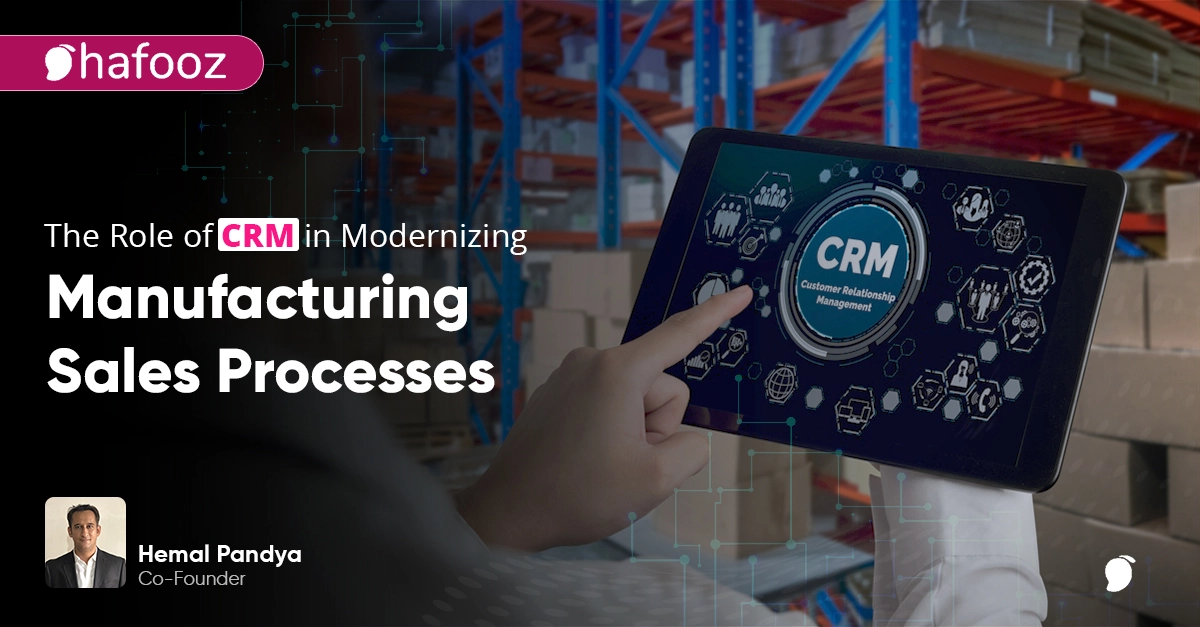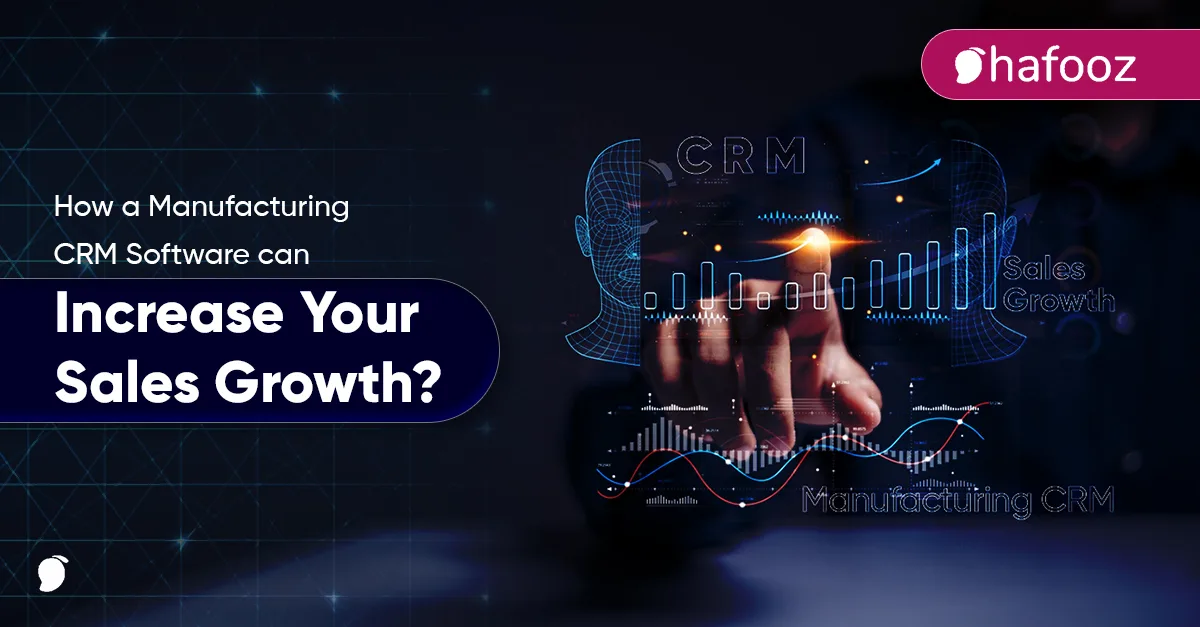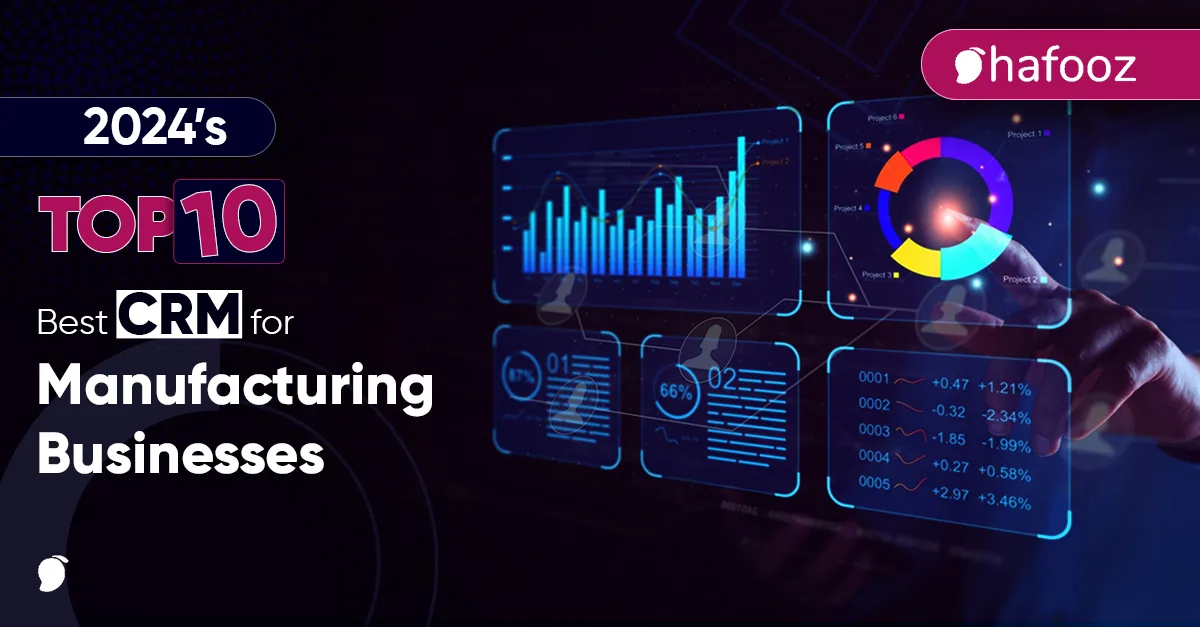Do you feel stuck in a sales maze? Do you have the right products but struggle to reach the right customers?
In the manufacturing industry, sales are more than just making great products. It is about understanding your customers’ demands and converting them into thriving businesses.
But how do you know if your sales are paying off or where you need to focus? You can use key performance indicators for manufacturing industry to do so. How?
Read the blog ahead as we have handpicked the top 10 key sales KPIs to help you measure your sales growth.
What's on this page:
What are Key Performance Indicators (KPIs,) and Why are they Important?
Key Performance Indicators (KPIs) are quantifiable metrics of performance over time. Businesses and organizations use them to track their overall success. KPIs help every aspect of your business move forward at a strategic level.
For example, KPIs can be benchmarks for your business to measure the efficacy of a sales process.
By analyzing KPIs, businesses can recognize their –
- Strengths and weaknesses,
- Determine their areas for improvement,
- Make data-driven decisions and
- Work towards overall growth.
![]()
What are Sales KPIs?
Sales KPIs track sales activities for a business. Businesses rely on efficiency and output, but how do you know if your sales efforts are converting into revenue?
Here, sales KPIs help sales managers make data-driven decisions to constantly improve and optimize their sales funnel. They can also use them to assess the effectiveness of a sales process and achieve revenue targets.
Consider them your factor floor’s gauges that indicate how well your ‘sales machine’ is running. KPIs help you see the real progress towards your goal and pinpoint areas for improvement.
What is the Importance of Manufacturing KPI Metrics?
Sales is the driving force behind every manufacturing business. A well-performing sales team is important so that the entire sales process runs smoothly and yields overall profits for the business.
But how can you tell if your sales team is achieving its best? You need actionable insights and effective ways to guide your team toward success.
Sales Key Performance Indicators can be an effective way to:
- Identify Issues in Sales: You can analyze any problems in the sales process with sales KPIs.
- Evaluate Sales Team: KPIs help you determine how well your sales team is performing.
- Optimize Your Resources: You can identify a specific product or service that brings in the most earnings.
- Attract Customers: KPIs also help identify potential areas of growth and products attracting more customers.
- Master Sales Lead: KPIs help the sales team in mastering Manufacturing sales leads. You can evaluate how effectively and quickly your sales team converts leads into customers.
Sales KPIs give you a clear picture of your sales progress. Using manufacturing KPI metrics you can spot the trends that you might miss. You can use them to fix the issues and make strategic decisions to improve your overall sales performance.
10 Sales KPIs to Track for Manufacturing Success
Every business needs specific sales key performance indicators for the manufacturing industry. However, certain KPIs can be effective for all businesses.
Here are the top 10 sales KPIs for you.
1. Sales Revenue/ Growth
Sales revenue is the total income a business earns by selling its products or services during a specific period. Sales growth is the increase in sales revenue from one period to another.
Formula:
Sales Growth = {(Current sale – Previous sale) / Previous sale} * 100
Why is Sales Growth Crucial? Sales growth is a key performance indicator for any business, as declining sales can put a business at risk of closure.
Tip: Use a monthly dashboard to track your sales revenue. Set practical monthly targets for your sales team. This will keep them motivated to achieve the company’s target.
2. Retention and Churn Rate
Customer retention measures how many customers stay connected with your business. This reflects how well your sales team keeps customers happy.
The churn rate is the number of customers who leave your business for various reasons, such as product issues, bad experiences or competition.
Formula:
Retention Rate = {(Number of customers at the final stage) / (Number of customers at the initial stage + New customers)}* 100
OR
Churn Rate = 1 – Customer retention rate
Why are Retention and Churn Rates Important? Customer retention and churn rates help you identify potential problems and take steps to prevent customer loss.
Tip: Retaining existing customers is more cost-effective than acquiring new ones. Therefore, keeping a close eye on their churn rate is wise.
3. Lead-to-Sale Percentage
Leads to sales percentage is a KPI metric that helps you calculate the effectiveness of your sales funnels in converting potential customers into real ones.
Formula:
Lead to Sale % = (Total sales generated / Total number of leads)* 100
Why is Lead-to-Sale % Important? A high lead-to-sales percentage implies that your sales team effectively converts your leads into actual customers. By tracking the most generated leads, you can also measure the ROI of your marketing efforts.
Tip: Lead-to-sales percentage helps you determine whether you have enough quality leads in your sales pipeline or if there are bottlenecks in the sales process that require attention.
4. Average Sales Cycle Rate
The average sales cycle rate is the time it takes a sales executive to convert a lead into a customer (from the initial contact with a potential customer to the final sales completion).
Each lead has its unique sales cycle length. For instance, some deals close might close in a day while some can take weeks or months to complete. But, with an average sales cycle rate, you can get an average idea of how long a sales process typically takes to complete.
Formula:
Average Sales Cycle Rate =Total days to wrap up all deals / Total number of won deals
Why is the Average Sales Cycle Rate Crucial? Average sales cycle rate can help you set achievable sales goals. You can also forecast future sales.
Tip: Set a benchmark for how long your sales cycle should be. Then, find ways to streamline it to close deals faster.
5. Product Performance
Product performance is a broad term that helps you understand how well your product did in the market. It can also identify the top-selling and behind-the-rack products. Moreover, you can track the sales of your product or service and rank it accordingly.
Formula: It can be measured on various factors:
- Number of units sold per product
- Total revenue generated per product line
- Product-specific customer satisfaction rating
Why is Product Performance Important? Product performance is similar to a report card for your product or service. Using this information, you can identify if your product needs improvement and if the customers are satisfied with your product.
Tip: A popular, low-cost product may not be the most profitable. Look at the bigger picture. A popular, low-cost product may not be the most profitable. Look at the bigger picture and think about what’s driving the sales. Is it your clever marketing skills or a competitor introducing a similar product at a lower price?
6. Sales per Rep
Sales per rep or revenue per sales is a KPI metric that helps you assess the performance of each of your sales representatives. It allows you to determine how much sales each sales executive brings to your business.
Formula:
Sales per rep = Total number of sales / Number of sales made by rep
Why is Sales per Rep Important? This metric will help you compare and identify the top-performing team members with members who might need more training or support. You can use this number to set goals and find top performers in your sales team. This can be a healthy competition to motivate your sales representative.
Tip: Sales per rep is not the only criterion to evaluate team performance. It would help if you also considered other factors, such as their experience level or the market size they are working for.
7. Quote-to-close ratio
The quote-to-close ratio is a key sales performance indicator that allows you to calculate how effectively you transformed your potential customers into real ones.
Formula:
Quotes-to-close ratio = (Number of won deals/ Number of total quotes sent) * 100
Why is the Quote-to-close ratio Important? With the quote-to-close ratio, you can find out your sales funnel weaknesses, address customer concerns and strategize for a higher conversion rate.
Tip: To determine if your sales team members are on track, you can compare this ratio to the previous performances of your team.
8. Average Profit Margin
The average profit margin rate defines a company’s profit per dollar generated income. This means the income your company makes after subtracting all the expenses, including the total costs to produce or sell your products.
Formula:
Average profit margin = (Total income of your business/ net sales)*100
Why is Average Profit Margin Crucial? The growth of a business relies heavily on maintaining a higher average profit margin, which can also be used to evaluate the business performance.
Tip: Monitor profit margins for specific products or services, your entire business, or specific areas.
9. Customer Acquisition Cost
The customer acquisition cost tells you how much capital you need to acquire a customer. It is the money you spend persuading people to become your customers. It covers the cost of marketing, sales, and other expenses.
Formula:
Acquisition cost of customer = (Total sales and marketing expenses/ Total number of new customers)
Why is Customer Acquisition Cost Important? A high CAC (customer acquisition cost) means your acquisition efforts are costly, and you might need to optimize them. If you are aware of your CAC, you can also allocate your funds and sales budget effectively.
Tip: Keep this cost as low as possible while increasing customers value.
10. Average Conversion Time
The average sales cycle rate is the amount of time it takes to convert a lead into a customer (from initial contact with a potential customer to the final sale).
The average conversion time can vary according to your business. For example, for e-commerce, the average conversion time is the time a customer spends to complete a purchase.
Formula:
Average conversation time = Total time to convert lead into sale / Total number of new deals
Why is Average Conversion Time Important? A shorter average customer time means the leads convert into sales easily in less time. Therefore, shorter average customer time leads to better sales and more revenue for your business.
Tip: You can use average conversion time to monitor and evaluate the productivity of your sales funnel.
Conclusion
With these 10 sales, key performance indicators in the manufacturing industry can unlock hidden sales potential, optimize your sales strategy, and boost your bottom line.
At hafooz, we simplify sales for your manufacturing business. So, don’t miss any potential opportunity to grow your business.







